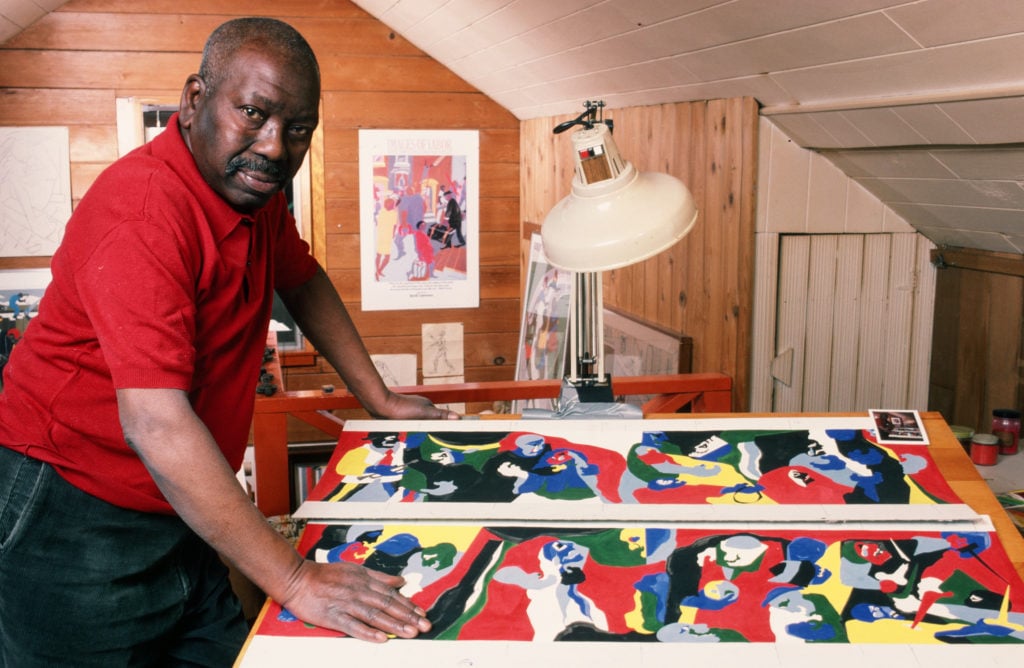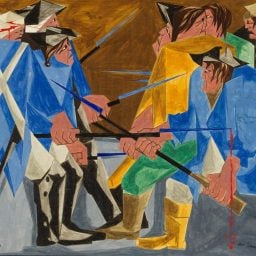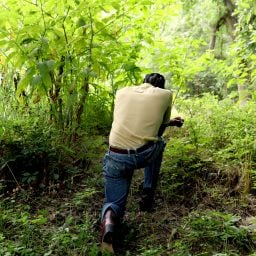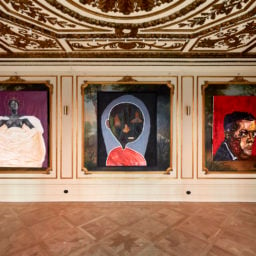While museums around the globe are closed to the public, we are spotlighting each day an inspiring exhibition that was previously on view. Even if you can’t see it in person, allow us to give you a virtual look.
What the museum says: “‘Jacob Lawrence: The American Struggle’ is the first museum exhibition of the series of paintings ‘Struggle: From the History of the American People’ (1954–56) by the best-known Black American artist of the 20th century, Jacob Lawrence (1917–2000). Created during the modern civil rights era, Lawrence’s 30 intimate panels interpret pivotal moments in the American Revolution and the early decades of the republic between 1770 and 1817 and, as he wrote, ‘depict the struggles of a people to create a nation and their attempt to build a democracy.'”
Why it’s worth a look: We should all be so lucky as to visit this exhibition in person when museums are back up and running, but in the meantime, seeing the saturated egg-tempera paintings by Lawrence on a screen is itself a welcome respite from the news.
This is the first time in more than 60 years that all of the panels from the “Struggle” series are together, and taken in their entirety the scope of the late Lawrence’s talents is stunning. The panels, intimately scaled, are made up of bold, graphic shapes that vibrate with activity; much of it violent, as noted in the quotes that Lawrence used as titles, evoking the physical struggle of the battles, and the emotional turmoil it left in its wake.
The paintings are shown alongside works by contemporary artists Hank Willis Thomas, Bethany Collins, and Derrick Adams, who have been influenced by Lawrence’s spirit and visual oeuvre. While it is deeply unsettling to note how little has changed in terms of race relations, it is clear that every generation of artists are building on those who came before, and seeing the scope of Lawrence’s impact is a hopeful note to end on as Americans continue to struggle.
What it looks like:
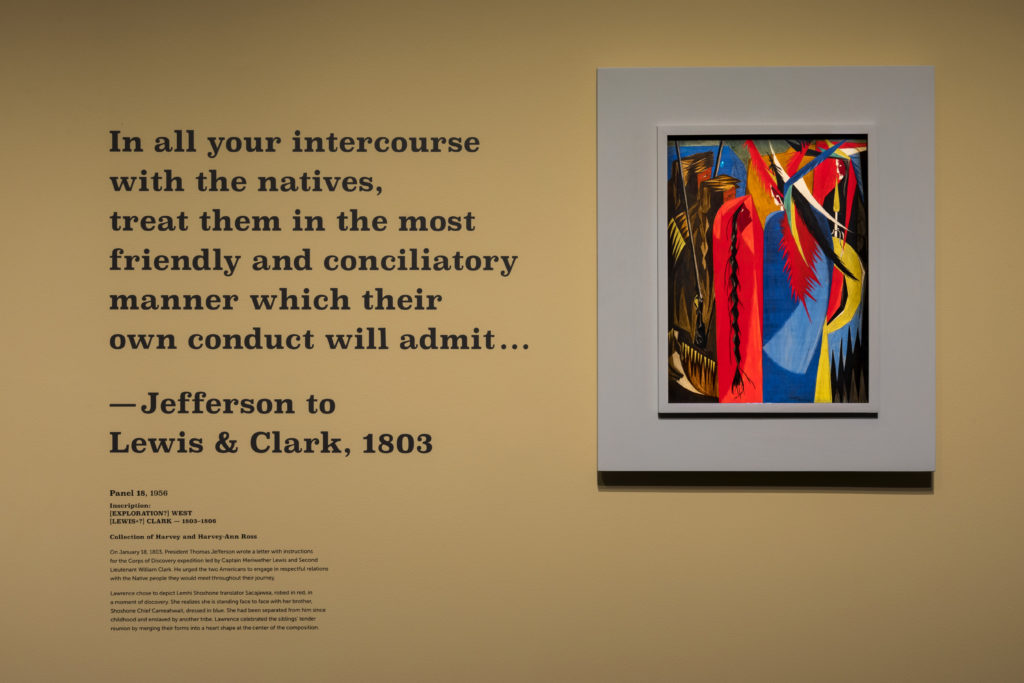
Installation view of “Jacob Lawrence: The American Struggle,” courtesy of Peabody Essex Museum.
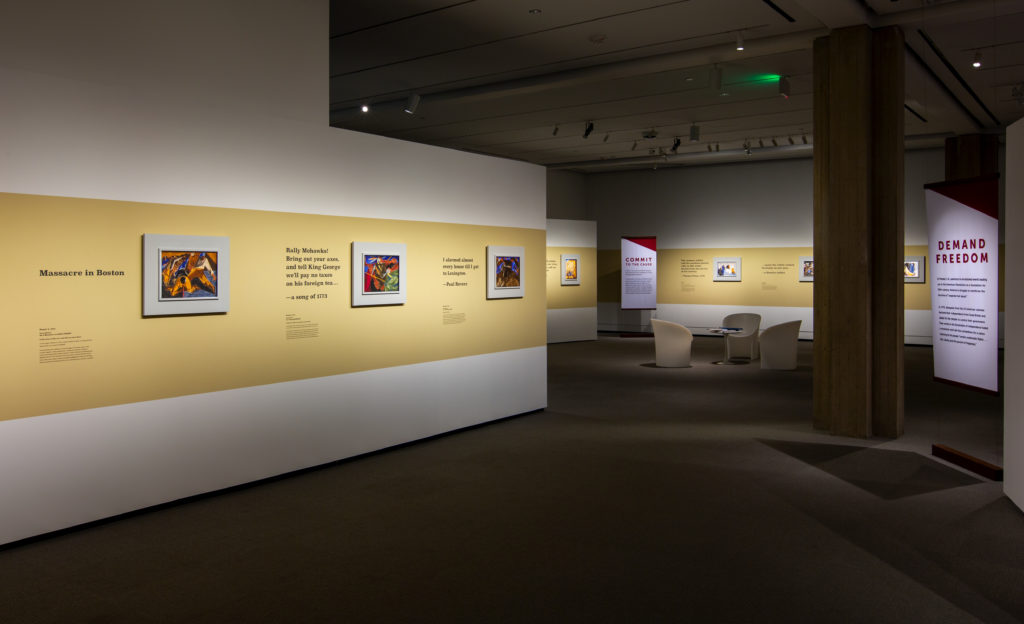
Installation view of “Jacob Lawrence: The American Struggle,” courtesy of Peabody Essex Museum.
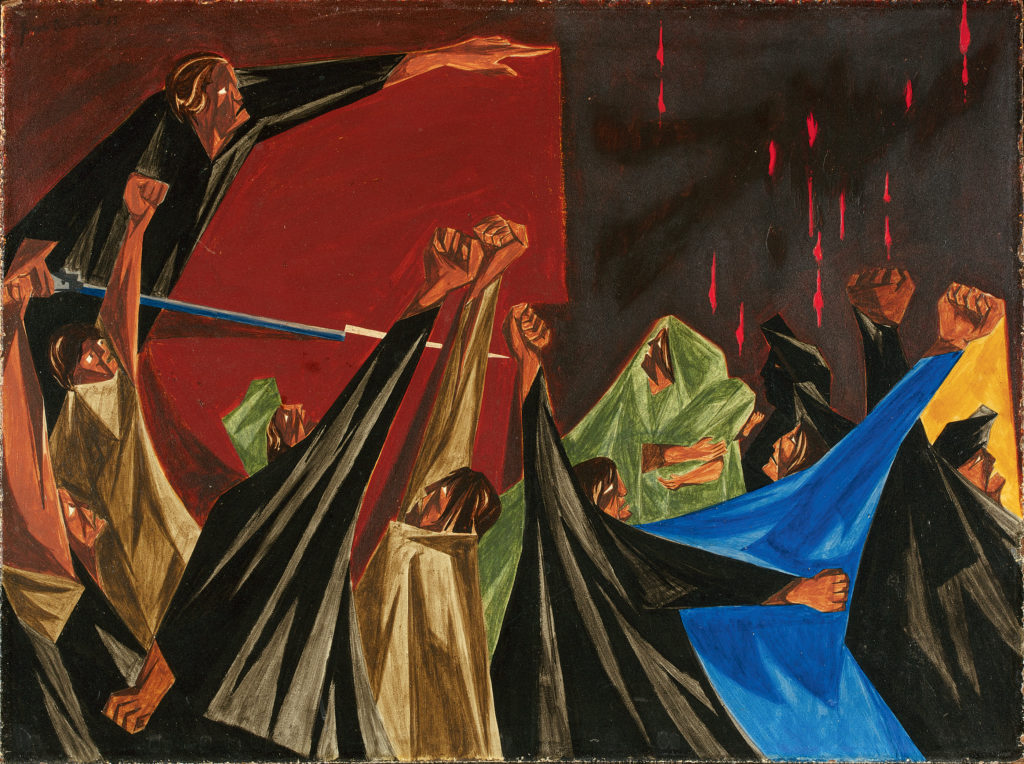
Jacob Lawrence, Panel 1. . . . Is Life so dear or peace so sweet as to be purchased at the price of chains and slavery? —Patrick Henry, 1775, (1955). © The Jacob and Gwendolyn Lawrence Foundation, Seattle/Artists Rights Society (ARS), New York. Photo by Bob Packert/PEM.
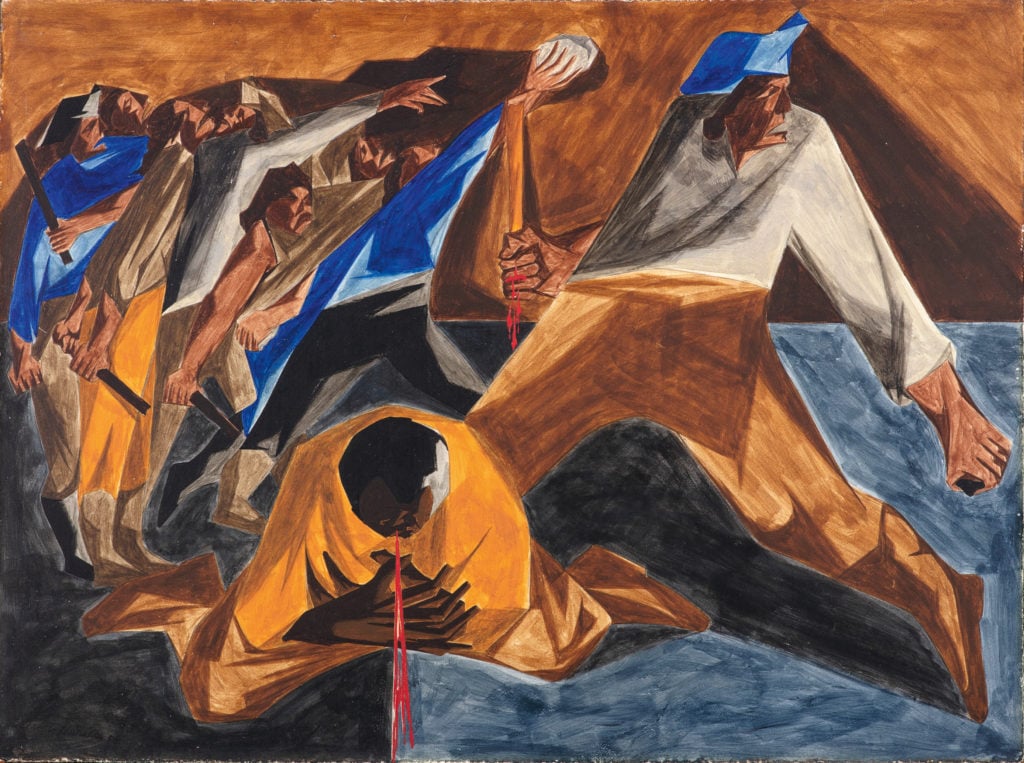
Jacob Lawrence, Panel 2. Massacre in Boston (1955). © The Jacob and Gwendolyn Lawrence Foundation, Seattle/Artists Rights Society (ARS), New York. Photo by Bob Packert/PEM.
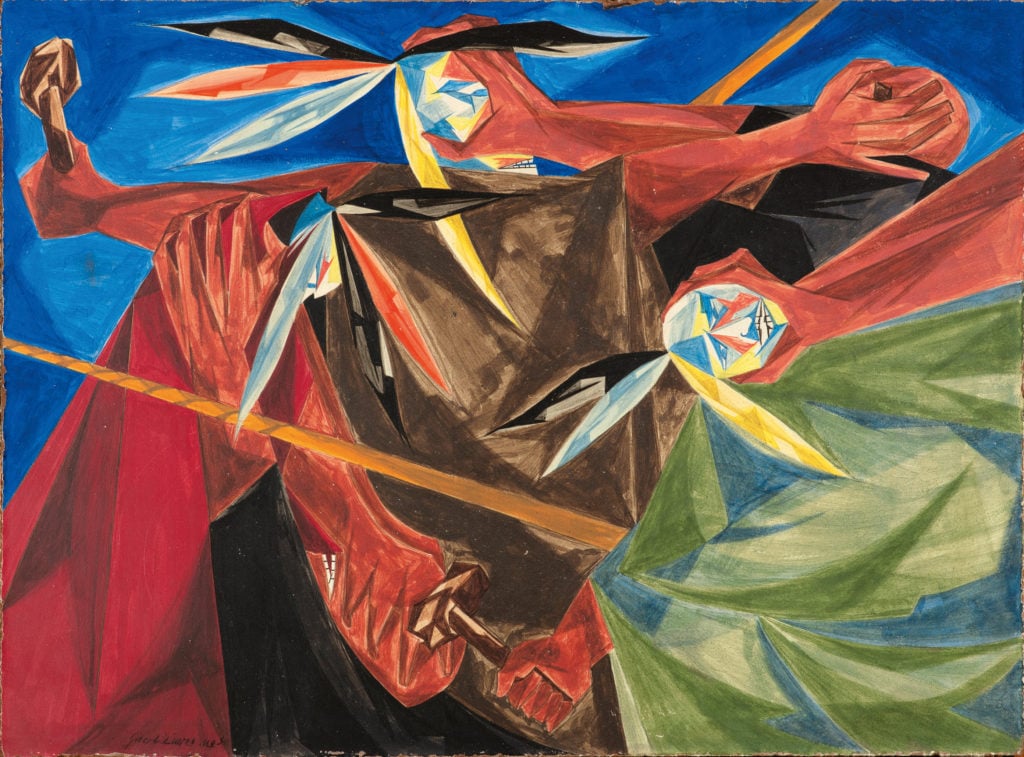
Jacob Lawrence, Panel 3. Rally Mohawks! Bring out your axes, and tell King George we’ll pay no taxes on his foreign tea. . . . —A song of 1773 (1955). © The Jacob and Gwendolyn Lawrence Foundation, Seattle / Artists Rights Society (ARS), New York. Photo by Bob Packert/PEM

Jacob Lawrence, Panel 5. We have no property! We have no wives! No children! We have no city! No country! —Petition of Many Slaves, 1773, (1955). © The Jacob and Gwendolyn Lawrence Foundation, Seattle / Artists Rights Society (ARS), New York. Photo by Bob Packert/PEM.
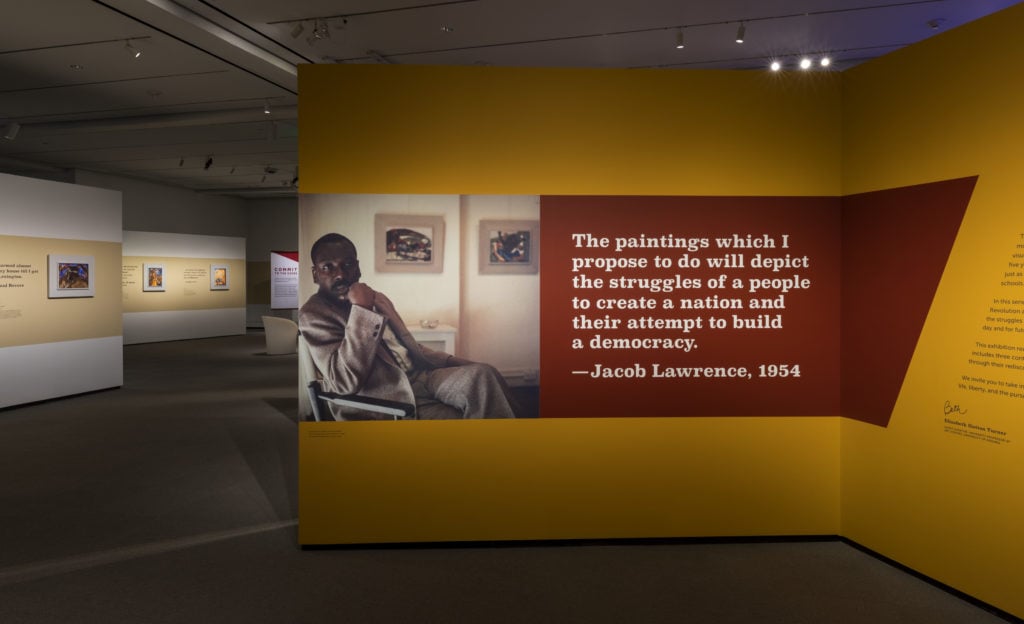
Installation view of “Jacob Lawrence: The American Struggle,” courtesy of Peabody Essex Museum.
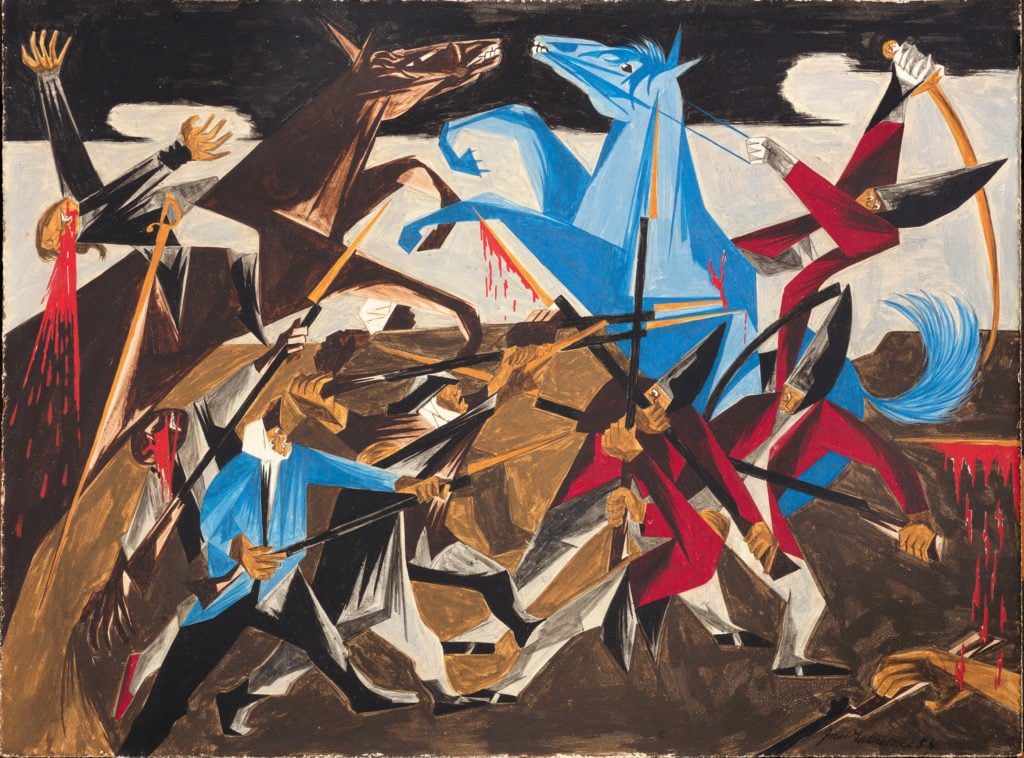
Jacob Lawrence, Panel 8. . . . again the rebels rush furiously on our men—a Hessian soldier, (1954). © The Jacob and Gwendolyn Lawrence Foundation, Seattle / Artists Rights Society (ARS), New York. Photo by Bob Packert/PEM.
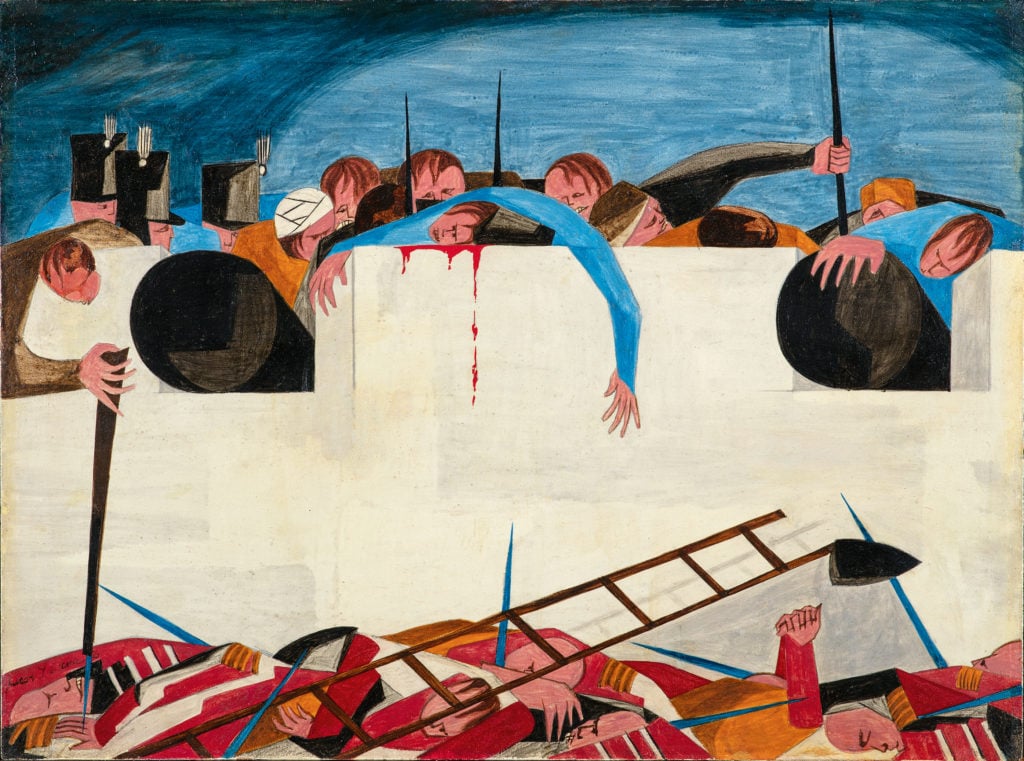
Jacob Lawrence, Panel 25. I cannot speak sufficiently in praise of the firmness and deliberation with which my whole line received their approach . . . —Andrew Jackson, New Orleans, 1815, (1956.) © The Jacob and Gwendolyn Lawrence Foundation, Seattle / Artists Rights Society (ARS), New York. Photo by Bob Packert/PEM.
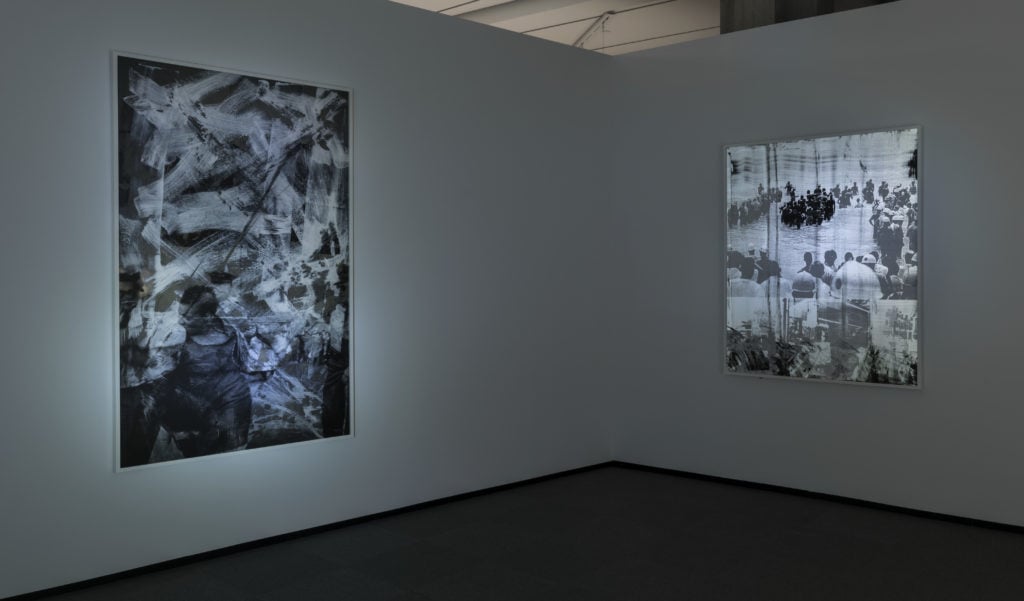
Installation view of “Jacob Lawrence: The American Struggle,” courtesy of Peabody Essex Museum.
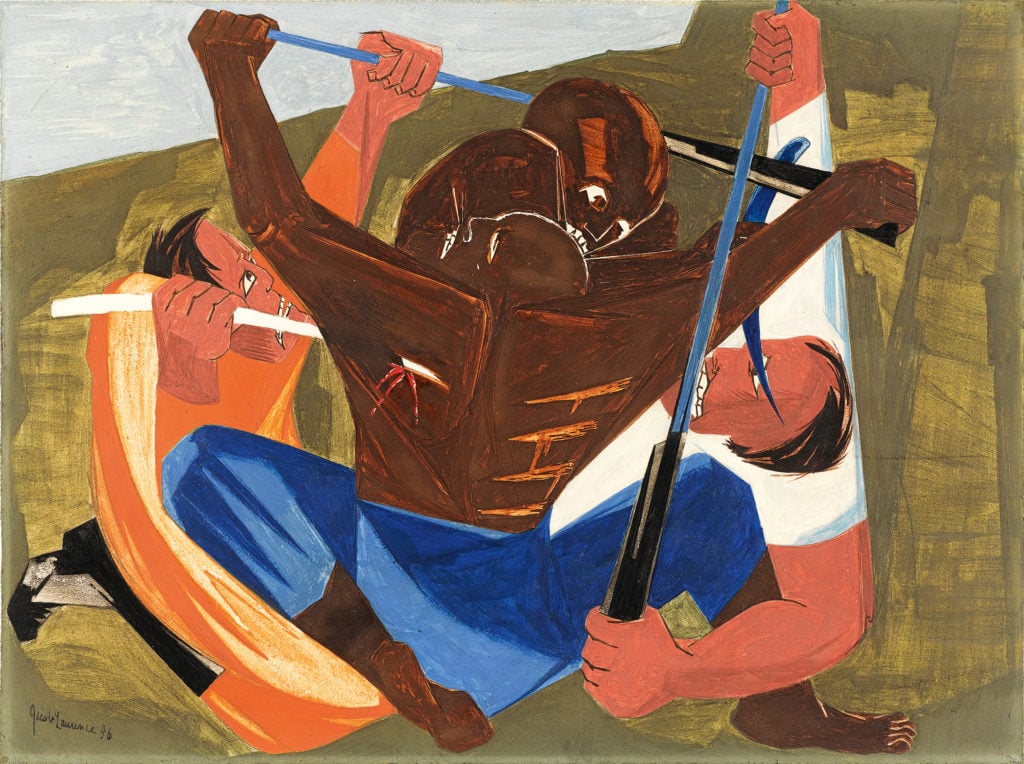
Jacob Lawrence, Panel 27. . . . for freedom we want and will have, for we have served this cruel land long enuff . . . —A Georgia Slave, 1810, (1956). © The Jacob and Gwendolyn Lawrence Foundation, Seattle / Artists Rights Society (ARS), New York.
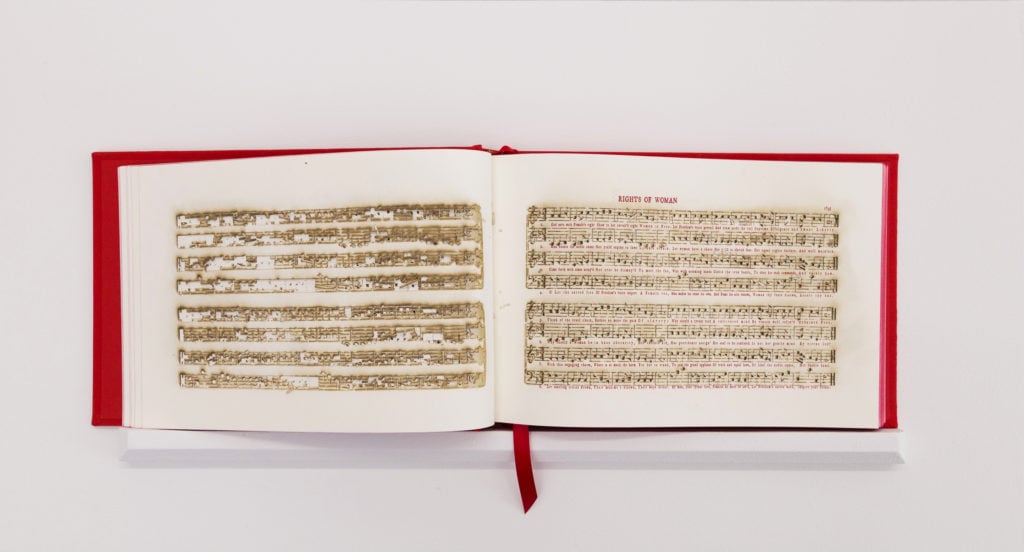
Bethany Collins, America: A Hymnal (exhibition copy) (2017) book with lasercut leaves. Peabody Essex Museum, Phillips Library, N7433.4.C639 A58 2017. Courtesy of PATRON Gallery. Photo by Tim Johnson.
